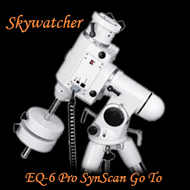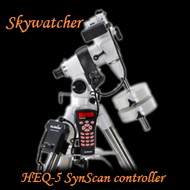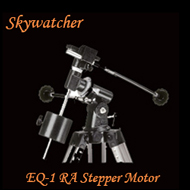| HOME |
|
A telescope mount is a mechanical structure which supports the mass of the telescope and allow for accurate pointing of the instrument. Many sorts of mounts have been developed over the years, with the majority of effort being put into systems that can track the motion of the stars as the Earth rotates, but the most commonly used are azimuth and equatorial mounts. The simplest type of mount with two motions, altitude (up and down) and azimuth (side to side/horizontal). Altitude and Azimuth - thus the name Altazimuth. Good altazimuth mounts will have slow-motion knobs to make precise adjustments, which aid in keeping tracking motion smooth. These type mounts are good for terrestrial observing and for scanning the sky at lower power but not for deep sky photography. Certain altazimuth mounts are now computer driven and allow a telescope to track the sky accurately enough for visual use but not for long exposure photography. Equatorial - Superior to non-computerized altazimuth mounts for astronomical observing over long periods of time and absolutely necessary for astrophotography. As the earth rotates around its axis, the stationary stars appear to move across the sky. If you are observing them using an altazimuth mount, they will quickly float out of view in both axes. A telescope on an equatorial mount can be aimed at a celestial object and easily guided either by manual slow-motion controls or by an electric motor drive to follow the object easily across the sky and keep it in view of the telescope. The equatorial mount is rotated on one axis adjusted to your latitude and that axis is aligned to make it parallel to their Earth's axis, so that if that axis is turned at the same rate of the speed as the Earth, but in the opposite directly, objects will appear to sit still when viewed through the telescope. Some Specifications of the telescope mounts
-- Tripod Height -- Guiding Speed -- Mount Type -- Motor Drive -- GO TO System -- Payload Capacity -- Slewing Speed -- Connect to PC |


